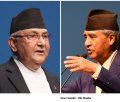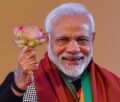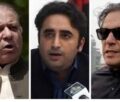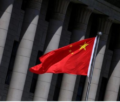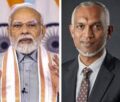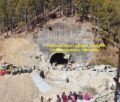Digital Media under fire: By Tukoji R Pandit

The government told the Supreme Court on September 17 that if at all it becomes necessary to prepare guidelines for all the media platforms then it is the digital media that has to be regulated first. The message was conveyed in an affidavit by the Ministry of Information and Broadcasting which maintained that there are ‘sufficient framework and judicial pronouncements’ that cover the electronic and print media.
It is ironic that the government sees the digital media in poor light when it is no secret that the ruling party has been its biggest beneficiary. Prime Minister Narendra Modi avoids direct interaction with the media (save the chosen ones) but has considerably enlarged his following by being active on the social media. Only his monthly monologue is broadcast through the established electronic media.
The BJP IT cell has effectively used the digital platforms for party propaganda while going to great lengths in denigrating the Opposition on a daily basis. The amount of disinformation and lies spread through the IT cell of the BJP is the backbone of the ‘WhatsApp University’ that has become the ruling party’s biggest weapon against all its critics.
Public memory is not so short as to forget what was in the news quite recently: How Facebook protected the interest of the BJP, even to the extent of ignoring its own code for hate speech of certain saffron leaders. When the controversy erupted, several BJP leaders rushed to defend Facebook even before anything was heard from its top executives.
But in the last few days something has happened that may have rattled the BJP. There has been a very high increase in ‘dislike’ for the BJP and its leaders on certain social media platforms. The significantly high numbers are a departure from trends witnessed over the past few years.
Completely taken aback, the BJP offered the stale explanation of Congress manipulating things—of all the places, from Turkey! The Congress party may not be able to believe its luck that it is being credited with shaking the Modi throne by displaying an unbelievable pull on the digital media.
The apex court had indicated on September 15 that it favours setting up a panel which will outline guidelines for the electronic media. The court’s observation came during the course of a hearing against a programme called Bindas Bol of Sudarshan TV which had likened entry of Muslims in civil services to ‘infiltration’ and ‘jihad’.
Severely criticising the programme for its ‘insidious’ content that cast aspersions on the credibility of the civil services examination conducted by the UPSC, the court had stayed its airing after a hearing on September 15. A bench of the court headed by Justice D.Y. Chandrachud had observed that the purpose of the show on Sudarshan TV appeared to be to ‘vilify the Muslim community’ and added that it made statement ‘in wanton disregard of the truth’.
The ministry had found nothing wrong in the Sudarshan TV programme to stop its telecast. To do that would go against the freedom of expression, said the government. This expression of respect for freedom of expression was touching, coming as it did from a government that likes to send to jail the people who criticize it. Sudarshan TV had defended its controversial show by claiming that it represented the ‘truth’.
In opposing guidelines for the entire spectrum of media, the government had taken the stand that the publication and airing of programmes by the mainstream media (print and electronic) was a ‘one-time act’, the digital media had a wider and faster reach of readership/viewership which could become viral because of several electronic applications like WhatsApp, Twitter and Facebook. That reach of the digital media had ‘serious implications’, said the government.
The duplicitous nature of the stand taken by the I&B Ministry is all too evident. It wants curbs on the digital media because it can reach a bigger audience than the mainstream media. While that may be correct technically, let us look at the reality.
Almost the entire media-print as well as electronic—is under the thumb of the government. The ruling party conveys its displeasure to media houses through officials and party apparatchiks whenever it finds something too critical of the government. Overlooking the ‘request’ made on behalf of the ruling party can be costly in two ways: Rush of tax and enforcement officials to the premises of the erring media house or its proprietor, and loss of revenue from government advertisements.
Two more factors should be considered. One, in the last six years of Modi Raj, Indian journalism has turned upside down; it is scathing and unsparing in criticising the Opposition while reserving nothing by adulation for the ruling party. Two, barring a handful of media outlets, the newspaper columns and air time on TV channels overflow with contents laudatory of the ruling dispensation and the Great Leader.
The government will, therefore, naturally feel that there is no need whatsoever to regulate the mainstream media. On the other hand, the government will be only too happy to see the digital media, which it cannot ‘regulate’ at present, gagged to shut up an avenue of dissent and criticism.
It is misleading to say, as the government does, that mainstream media programmes are ‘one-time acts’. The government may be blind to it, but a larger section of the electronic media runs campaigns on behalf of the ruling party that fit with its political agenda. The amount of hate and intolerance, not to speak of untruths, that is aired by the friendly ‘Godi Media’ has divided the society like never before.
Apart from dispensation of balanced news and views, a responsible media is expected to strengthen the social fabric and promote goodwill, peace and harmony, not promote hate and division. There are laws and regulations on unlawful conduct that apply to individuals as well as organisations like media houses but obviously they no longer apply to the friendly media.
The government has turned a blind eye to all the outpourings of hate and propagation of lies and fiction as facts in the friendly section of the media. But it is double quick in initiating action against any journalist or organisation that prints or airs anything unpalatable to it. Digital media is an irritant that the government wants to stifle.
-
Book Shelf
-
 Book Review
DESTINY OF A DYSFUNCTIONAL NUCLEAR STATE
Book Review
DESTINY OF A DYSFUNCTIONAL NUCLEAR STATE
- Book ReviewChina FO Presser Where is the fountainhead of jihad?
- Book ReviewNews Pak Syndrome bedevils Indo-Bangla ties
- Book Review Understanding Vedic Equality….: Book Review
- Book Review Buddhism Made Easy: Book Review
- Book ReviewNews Elegant Summary Of Krishnamurti’s teachings
- Book Review Review: Perspectives: The Timeless Way of Wisdom
- Book ReviewNews Rituals too a world of Rhythm
- Book Review Marx After Marxism
- Book Review John Updike’s Terrorist – a review
-
-
Recent Top Post
-
 Commentaries
Impasse over BRI Projects in Nepal
Commentaries
Impasse over BRI Projects in Nepal
-
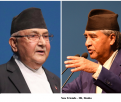 CommentariesNews
Yet another Musical Chairs in Kathmandu
CommentariesNews
Yet another Musical Chairs in Kathmandu
-
 CommentariesTop Story
Spurt in Anti-India Activities in Canada
CommentariesTop Story
Spurt in Anti-India Activities in Canada
-
 NewsTop Story
Nepal: Political Stability Under Threat Again
NewsTop Story
Nepal: Political Stability Under Threat Again
-
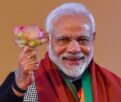 NewsTop Story
Accountability Tryst With 2024 Ballot….
NewsTop Story
Accountability Tryst With 2024 Ballot….
-
 NewsTop Story
What Would “Total Victory” Mean in Gaza?
NewsTop Story
What Would “Total Victory” Mean in Gaza?
-
 CommentariesTop Story
The Occupation of Territory in War
CommentariesTop Story
The Occupation of Territory in War
-
 CommentariesTop Story
Pakistan: Infighting in ruling elite intensifies following shock election result
CommentariesTop Story
Pakistan: Infighting in ruling elite intensifies following shock election result
-
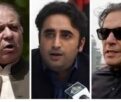 CommentariesTop Story
Proforma Polls in Pakistan Today
CommentariesTop Story
Proforma Polls in Pakistan Today
-
 CommentariesTop Story
Global South Dithering Away from BRI
CommentariesTop Story
Global South Dithering Away from BRI
-
AdSense code



